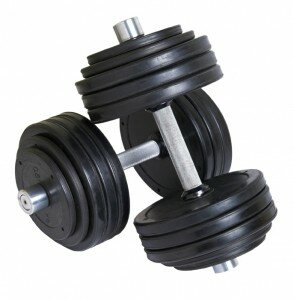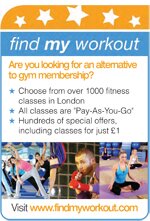 Being able to design good programmes is the one of the fundamental skills a personal trainer needs to be able to demonstrate. Our clients’ success depends on our skilful manipulation of the training variables and our financial success depends on our clients’ achieving their goals while hopefully enjoying the process. This all means we need to write exercise programs that are physically stimulating, mentally interesting, challenging and varied.
Being able to design good programmes is the one of the fundamental skills a personal trainer needs to be able to demonstrate. Our clients’ success depends on our skilful manipulation of the training variables and our financial success depends on our clients’ achieving their goals while hopefully enjoying the process. This all means we need to write exercise programs that are physically stimulating, mentally interesting, challenging and varied.
The object of this article is to explore the fundamentals of programme design with a view to sharpening up our programme design skills and avoiding getting stuck in a programme design rut!
The most common problem I see is that the majority of trainers write programmes that they would perform themselves…i.e. trainers with a cardiovascular background write CV programmes, whilst trainers with a resistance background invariably produce watered down hypertrophy sessions. This is not personal training! A clients’ programme should reflect their needs and wants and not reflect the area of interest of the trainer.
I recently heard about a personal trainer who had every single one of his clients on a very similar programme regardless of their experience, gender, goals or medical constraints…
- 10 minute bike warm up
- 20 minute treadmill intervals (1 minute fast/1 minute slow – 10 sets)
- 2-3 resistance exercises (mainly isolation, performed as part of a split routine)
- “Sit ups” – flexion based core movements (no extension, rotation, lateral flexion etc.)
- Stretch (as time permits)
Example programme designed by a not – so personal trainer
Reps were always in the 8-12 range, 3 sets were performed each time and the last set was, almost without fail, performed as a drop set.
This kind of programme design is far removed from the personalized approach we teach at Solar Fitness Qualifications. The trainer in question (not one of our graduates!) may well experience some positive results with his clients initially but, needless to say, it won’t be long before his clients hit the dreaded “performance plateau” and a client who ceases to see improvements in their fitness and increases in their fitness levels is very likely to take their hard earned money elsewhere, leaving our not-so personal trainer with a gap in his diary and a subsequent drop in earnings – not a good scenario.
There are a number of prerequisite stages that need to be covered before we even set foot in the gym. Follow these steps and your clients will soon be well on their way to reaching their training goals…
STAGES OF PROGRAMME DESIGN
1) Gathering information
The first stage of programme design is to gather information. Initially, this should take the form of an in depth medical questionnaire, a discussion of the clients general lifestyle (nutrition, time available, exercise history, likes, dislikes etc) as well as goal setting.
2) Health screening
After establishing our clients’ goals etc, we need to screen our clients fully to ascertain their readiness to exercise. The normal battery of static tests should be applied – blood pressure, Resting Heart Rate, Lung Function and Body Composition. Remember these tests provide personal trainers with a legal safety net and should never be ignored. The results of these static tests may reveal underlying medical conditions and also provide an opportunity for medical referral.
3) Fitness Testing
Once we have established that our client is healthy enough to commence exercising, it may be necessary to conduct some rudimentary fitness testing including appropriate tests for cardiovascular fitness, muscular strength and endurance, flexibility and proprioception/balance. This information can then be used to establish musculoskeletal fitness, energy system fitness, the setting of initial intensity levels and monitoring improvements in the coming months.
4) Review
On completion of this initial consultation, it might be necessary to adjust our clients’ goals if the gathered results suggest that they are unrealistic. Remember it is much better to under promise but then over deliver rather than over promise and under deliver! More often than not it is the trainer who will be blamed for the client not reaching their fitness goals, and not the client for non-compliance so ensure goals are challenging but realistic targets to improve your chances of success.
5) Personalised programme design
When we have gathered all the pertinent information, it’s time to put pen to paper and start being creative with our programme design.
The first rule of programme design is “treat what you find”. Fitness training IS therapy and we have gained a lot of information about our clients physical well being. The results of our testing should be the lynch pin on which our programme is based…If the client is weak then they need to develop strength. Client is unfit then cardiovascular exercise needs to be prescribed. Poor flexibility? Developmental stretching is required. Poor posture? Postural correction exercises are needed. Weak core? Poor muscular endurance? Poor proprioception? You get the idea!
Treating what you find is the very essence of personal training – an individualized approach based on the clients physical needs.
In part 2 of this series well delve deeper into programme design for resistance training.



















